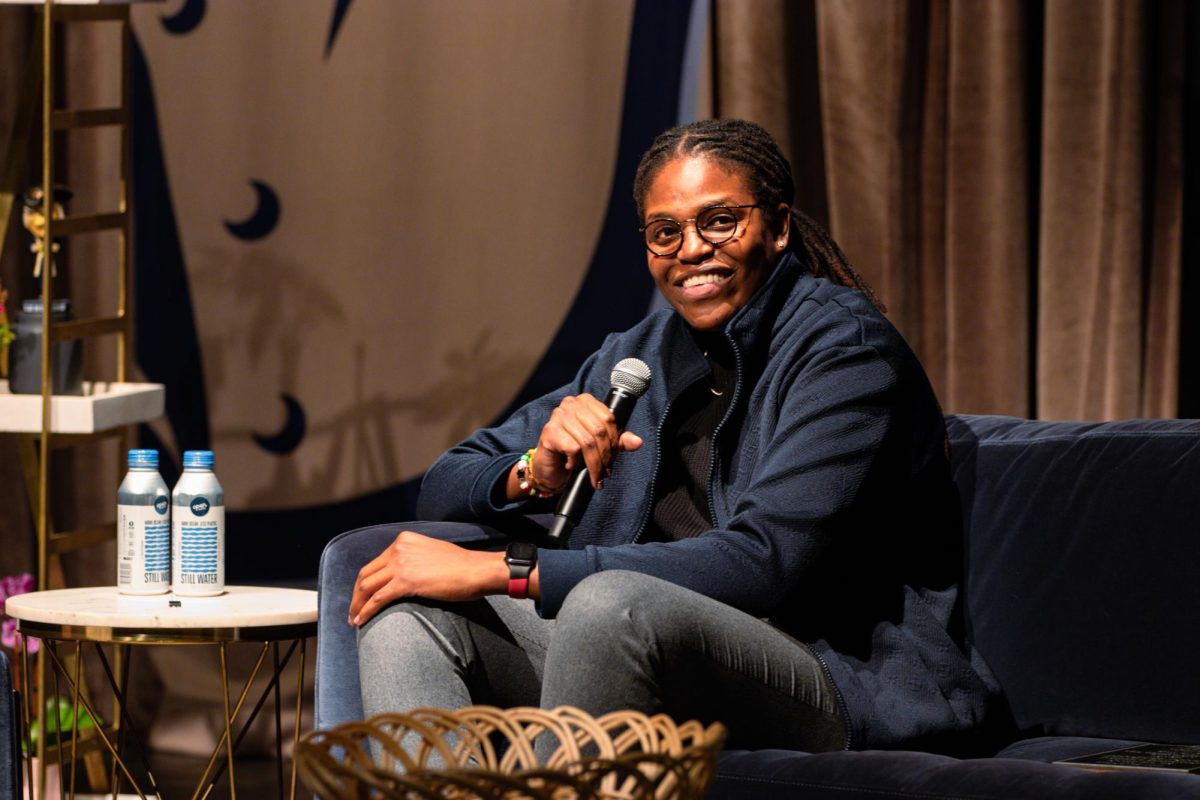D.C. businesses are addressing public harassment issues through street exhibits that opened this month and a bar training program that will grow throughout this year.
Safe Bars, a D.C. program that started last May to provide bar staff with bystander intervention training to prevent sexual harassment, will expand into other sections of the city this year, as well as to other cities like Philadelphia and Seattle.
The D.C. Commission of Arts and Humanities recruited Marshall Moya Design to design an exhibit called The Walkway at the corner of U and 14th streets. A similar exhibit opened in Columbia Heights, the designers said.
Experts said streets and sexual harassment can overlap, especially in public, so bringing awareness to the issue can help prevent sexual violence.
Marshall Moya Design created The Walkway as part of Vision Zero, an initiative by the District Department of Transportation to reduce traffic fatalities, according to its website. The goal of The Walkway is to denounce and prevent street harassment, according to a flyer for the exhibit.
Pink stairs lead to the boxed display that features sounds associated with street harassment, like honking, catcalling and whistling. Brief stories about public interactions – both positive and negative – line the walls.
Zarela Mosquera, the design strategist for The Walkway, said the project focuses more on how people communicate in public than on harassment specifically.
“This project is really not just about sexual harassment,” she said. “It’s certainly a component of something that happens in public spaces.”
The tunnel design was chosen to contrast how different people feel in public, with tighter spaces representing when some people feel threatened, Mosquera said.
“A lot of people say that they see themselves in there – that they can relate to those stories, which is great,” she said.
Mosquera said Vision Zero has received about 300 responses to the art piece through an online reaction survey and that they will compile the data.
Hannah Laniado, a sexual violence prevention specialist, said including both positive and negative stories demonstrates how not everyone defines harassment the same way.
“I think it is a bit of a balance between public awareness and also hopefully not harming people who have already been harmed,” she said.
Others weren’t as supportive of the exhibit. Jessica Raven, the executive director of Collective Action for Safe Spaces, said she thought the exhibit diminished harassment with some of its stories and “triggering” noises.
“There are stories in that art piece that minimize the issue of street harassment and fail to connect it to the larger problem of rape culture and violence against primarily women,” she said.
Raven said specific stories on the walls are problematic, like one of a man who spoke about another man who “told me he wished he could dive into my chest hair. It was really odd, but I found it comical and sympathetic.”
Because harassment could escalate to sexual assault, the statement could be offensive to some people, she said.
Raven works with Defend Yourself, a training organization for self-defense and violence recovery according to its website, to run Safe Bars, which now has 20 certified bars in northwest D.C.
The two-hour training, that includes role-play and discussions, has been adjusted throughout the year to reflect feedback given after check-ins, Raven said. Now, more trainings will address sexual harassment of bar staff and hate-based harassment.
“It’s the same bystander intervention training, but we have a conversation about race and the ways that race and religion and ethnicity may affect the different ways communities experience harassment,” she said.
Sudhouse co-owner Allison Farouidi said street and sexual harassment can connect in public situations, like when a man follows a woman into a bar.
Farouidi contacted Safe Bars in March to provide training to her staff after witnessing and experiencing sexual harassment as a bartender. She said teaching bar staff how to approach being harassed themselves would is important addition to the training.
“We’re in it day-to-day,” she said. “Sometimes people can remove themselves. As a bartender, you depend on that livelihood.”
Laniado, the sexual violence specialist, said that both Safe Bars and the exhibit raise awareness about harassment, which is an important first step to ending it.
“If it’s not on people’s radar, it’s hard to start moving toward prevention,” she said.





